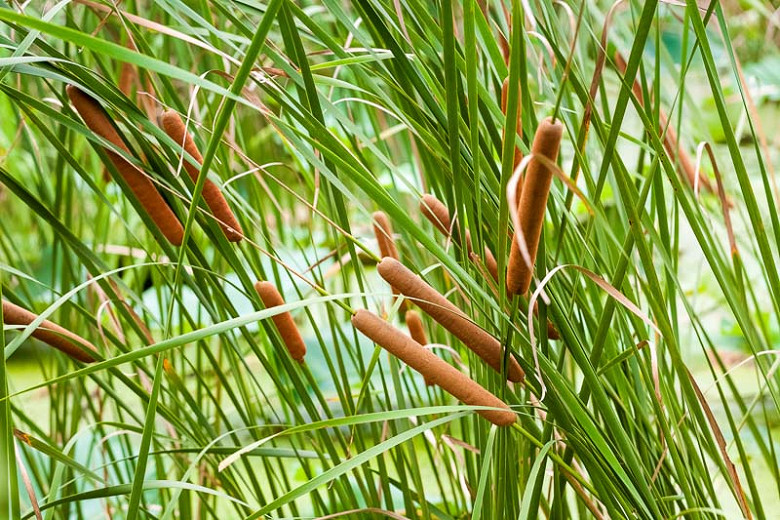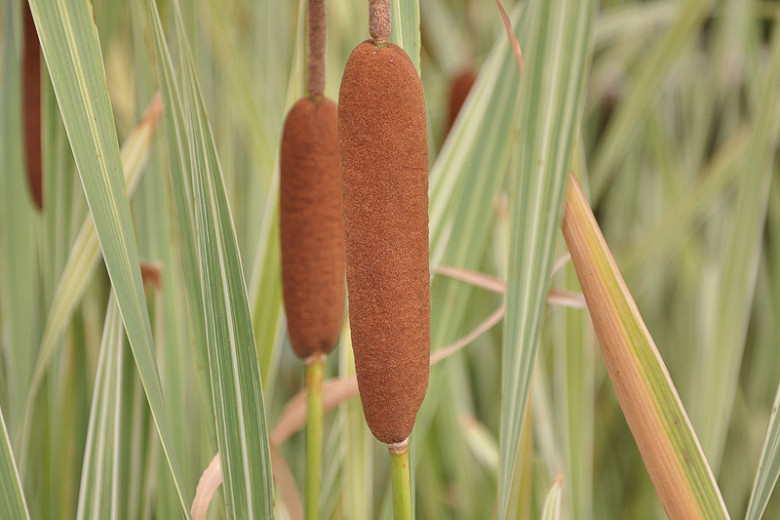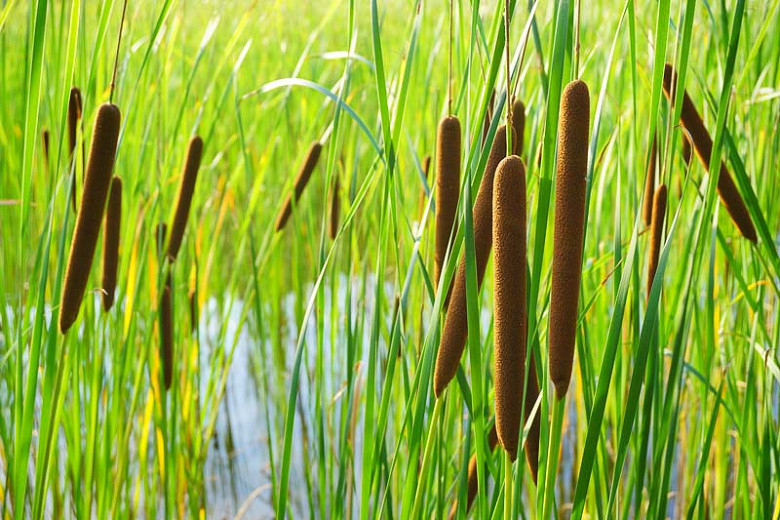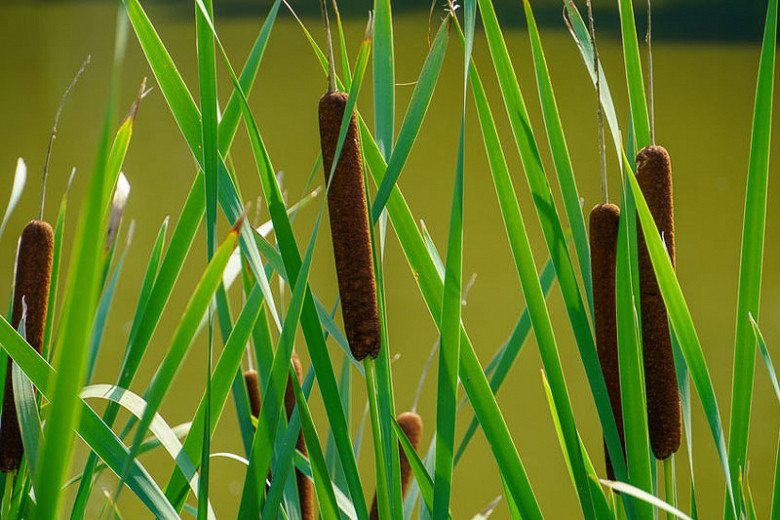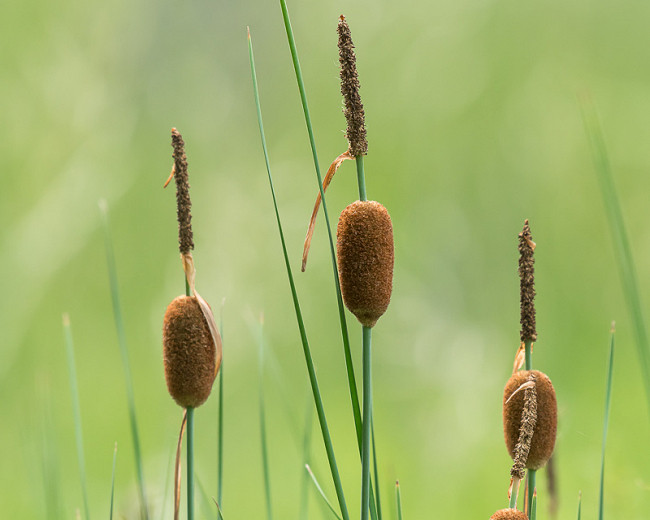Typha angustifolia (Narrow-Leaved Cattail)
Typha angustifolia (Narrow-Leaved Cattail) is a vigorous, marginal aquatic perennial forming a dense clump of very narrow, flattened leaves, 2-5 ft. long (60-150 cm). In late spring and summer, the plant bears cylindrical inflorescences, up to 9 in. long (22 cm), composed of tiny male, staminate flowers in the upper portion and female, pistillate flowers below. Male and female flowers are separated by a 2-6 in. gap (5-15 cm). The male flowers are golden yellow at the time they shed their pollen, then they disintegrate, leaving a naked stalk tip. The densely packed female spike turns from green to rich brown as the seeds mature. The fruiting spikes are widely popular for cut flower arrangements. The fertilized flowers produce single-seeded, nutlike achenes with long, slender hairs that allow for wind and water transport of the seeds. One plant can produce approximately 250,000 soft downy seeds in the fall. Seeds can remain viable in the seed-bank for up to 100 years. Narrow-Leaved Cattail has thick, rapidly spreading, lateral rhizomes. It spreads to form dense colonies in shallow water, where it provides a favorable habitat for wetland birds and other wildlife. Native to wetlands, lakeshores, river backwaters, road sides, ditches, disturbed wet areas, bogs, fresh or brackish marshes, lakes, and ponds in North America, Europe and Asia, Narrow-Leaved Cattail can grow in a pond, water garden or bog garden. Narrow-Leaved Cattail is a competitive species primarily considered a nuisance in North America where it invades and displaces other, less competitive, wetland and emergent species, causing loss of biodiversity. It should not be introduced without thought as to how to control it. Site plants carefully because the roots go deep and are hard to eradicate once established.
- Grows up to 3-7 ft. tall (90-210 cm) and 3-5 ft. wide (90-150 cm).
- A full sun to part shade lover, this plant thrives in shallow water, 12 in. deep (30 cm). It can thrive in nutrient rich or slightly saline soils. Outside of containers, rhizomes can spread rapidly to form colonies when happy.
- No serious pest or disease issues.
- Propagate by root division or by seed.
- Native to North America, Europe and Asia.
Requirements
| Hardiness | 2 – 11 |
|---|---|
| Plant Type | Aquatic Plants, Perennials |
| Plant Family | Typha – Cattails |
| Exposure | Full Sun, Partial Sun |
| Season of Interest | Spring (Late)Summer (Early,Mid,Late)FallWinter |
| Height | 3' – 7' (90cm – 210cm) |
| Spread | 3' – 5' (90cm – 150cm) |
| Spacing | 60″ (150cm) |
| Water Needs | High |
| Maintenance | Average |
| Soil Type | Chalk, Clay, Loam, Sand |
| Soil pH | Acid, Alkaline, Neutral |
| Soil Drainage | Poorly Drained |
| Characteristics | Showy |
| Native Plants | United States, California, Midwest, Illinois, Indiana, Iowa, Kansas, Michigan, Minnesota, Missouri, Nebraska, North Dakota, Ohio, South Dakota, Wisconsin, Northeast, Connecticut, Delaware, Maine, Massachusetts, Maryland, New Hampshire, New Jersey, New York, Pennsylvania, Rhode Island, Vermont, Pacific Northwest, Idaho, Oregon, Washington, Rocky Mountains, Colorado, Montana, Utah, Wyoming, Southeast, Arkansas, Kentucky, Louisiana, Mississippi, North Carolina, South Carolina, Tennessee, Virginia, West Virginia, Southwest, Nevada, New Mexico, Oklahoma, Texas |
| Tolerance | Wet Soil |
| Attracts | Birds |
| Garden Uses | Bog Gardens, Ponds and Streams, Rain Gardens, Water Gardens |
